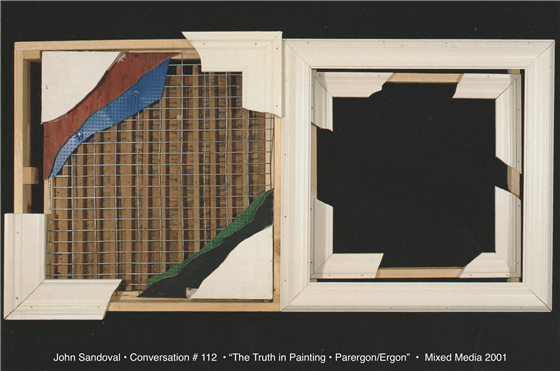

The Art of Conversation
Source/Author: John Sandoval, Guest Writer
November 12, 2021
Looking back at Wednesday’s Conference Day, and ahead to next week’s Charger Chat, the topic of conversations seems quite appropriate. Our community is enriched each time we have conversations, and even more so when they are in person. With the art of conversation top of mind, I thought it would be interesting to have artist and educator John Sandoval (who is also my husband) present his thoughts on conversations, as a guest writer for this week’s Ebytes.
A hallmark event for children is that moment when an infant begins to develop language. At first it may be “da” or in my son’s case “ga.” Children rapidly learn new words and at the age of four a child may have learned more than 1,000 words, and by age ten more than 20,000. Many of us know that even before language is acquired a child understands what is being verbalized.
The art of conversation is acquired through a cooperation of exploring ideas, emotions, feelings, sentiments and points of view. Those of us in education know the work of Lev Vygotsky and his teaching technique of “scaffolding.” The success of scaffolding lessons is predicated on an MKO, “a more knowledgeable other” in the child’s “proximal zone of development.” Obviously, it is the adults who play an important primary role as the MKO in the education of a youth’s development. Vygotsky also thought that cultural attitudes and beliefs are passed down through the very language that is being spoken.
In my home state of New Mexico, there are many initiatives directed toward preserving the Navajo language among the Diné, so that their Native American culture might be protected. In a recent interview, Bruce Springsteen stated that music is a vehicle for “common values and shared narratives.” I believe this is true for conversation as well.
Conversations are not solely verbal, and they need not be bounded by two individuals; oftentimes they include visual information, how eyes are cast, body language and position. One can have an internal conversation, a conversation with nature, an inner spiritual conversation, an aesthetic conversation, a conversation with an author or character in a book or contestant on a television game show, so forth, ad nauseum.
Writing is always a conversation with a blank page. Conversations can be contentious, bordering on argument, one-sided, difficult, or they can be inspiring, heartfelt and laced with kindness. There are conversations that are spoken with a public voice and then there are private conversations, some with a particular “family voice.” Some conversations last only minutes, some last well in the late evening hours. Some of the better conversations are composed of questions, statements of fact, feelings and illogical conclusions. Some circumstances tend to inaugurate conversation, like a long car ride, a walk, or slowly riding with a friend on a bicycle.
For over twenty years, as an artist, I have employed the idea of conversation in my work, using a diptych format. The best conversations feel as though one is being pulled into an exotic foreign land, by a tour guide, stopping along the way to point out landmarks and touch upon points of interest. Many conversations linger over time, embedded in our psyche as memories with parents, teachers and coaches. There is a proverb that reads: “Conversation is food for the soul.” I have found this to be true.
I look forward to interesting conversations with many of you at the upcoming Charger Chat on Tuesday, November 16 at 12pm and at other various opportunities to connect.
All the best,
Nancy
























